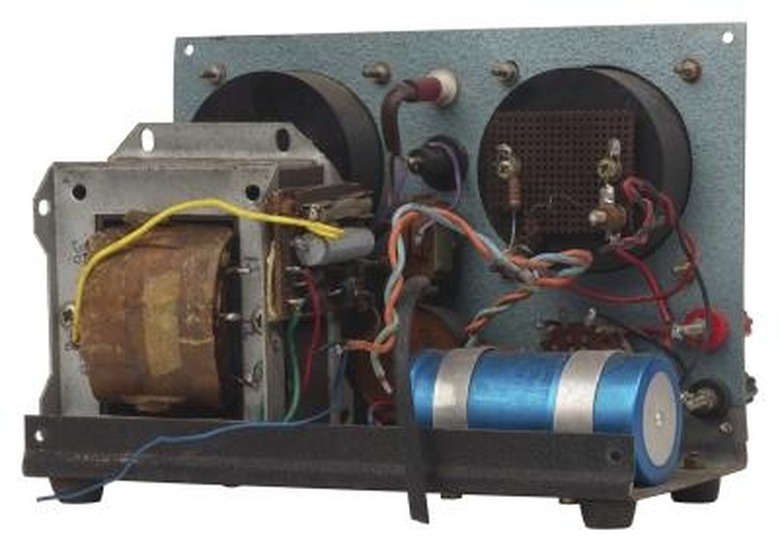How Does A DC Power Supply Work?
AC Power In
When power comes into a building, it is in AC, or "alternating current." AC current switches back and forth from positive to negative 60 times a second. It is carried into the building on the live wire. A second wire, called the return wire, carries the current back out of the house to complete the circuit.
Reducing the Voltage
Reducing the Voltage
AC current is carried in at 120 volts, far too high a voltage for most DC appliances. The voltage must be reduced through a step-down transformer. The AC current runs through a coil, which creates a magnetic field. A second coil, with fewer turns of wire, is placed next to it. The magnetic field from the first coil creates an electric current in the second coil. Because there are fewer turns in the second coil, it creates lower-voltage AC electricity.
Making DC
Making DC
Unlike AC, DC, or "direct current," only flows in one direction. A DC power supply has two wires–one with a negative charge and the other with a positive charge. A device called a rectifier is used to turn AC into DC. The central component of a rectifier is the diode. Diodes are one-way electric valves. When the electricity in the circuit turns negative, a diode lets it flow down the negative wire. When the electricity cycles back to positive, that diode closes automatically, and another diode lets the positive current flow down the positive wire. There are several different types of rectifiers, but they all use diodes in essentially the same way to separate the negative current from the positive.
Cite This Article
MLA
David, Isaiah. "How Does A DC Power Supply Work?" sciencing.com, https://www.sciencing.com/dc-power-supply-work-4910633/. 24 April 2017.
APA
David, Isaiah. (2017, April 24). How Does A DC Power Supply Work?. sciencing.com. Retrieved from https://www.sciencing.com/dc-power-supply-work-4910633/
Chicago
David, Isaiah. How Does A DC Power Supply Work? last modified March 24, 2022. https://www.sciencing.com/dc-power-supply-work-4910633/
